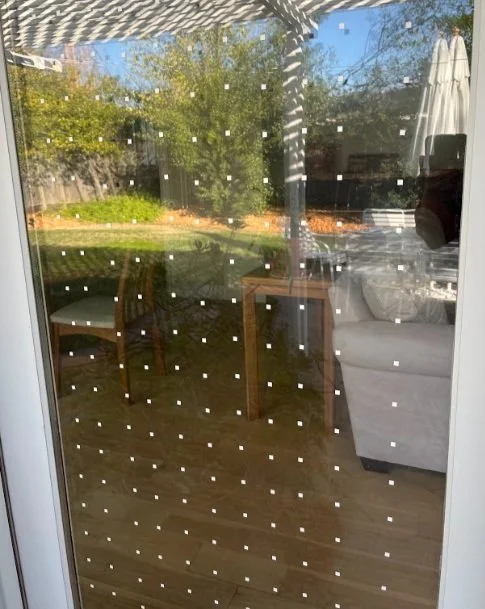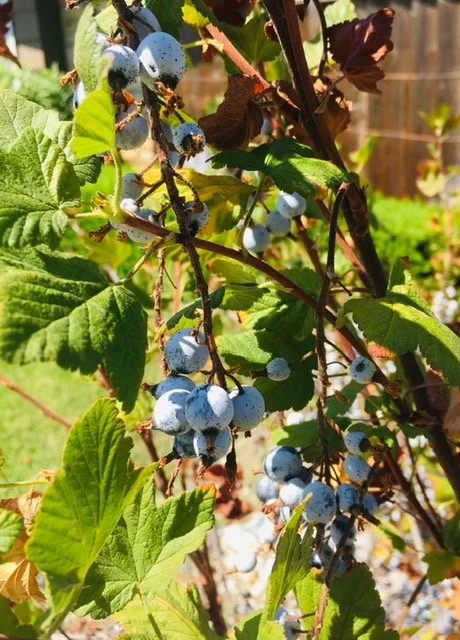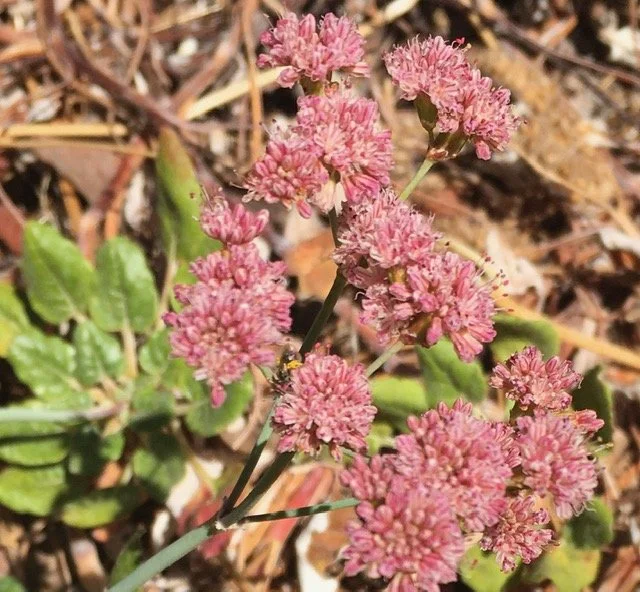Learn about the native plants that provide habitat for the birds in Santa Clara Valley. Add some of these to your home landscaping to support pollinators, birds, and other wildlife, and look for these when you're out hiking or birding in wild place. Check this page to find ideas and resources to help you make nature-friendly decisions when choosing plants for your patio or yard! And, view this presentation to get more ideas about Bird Gardening (October 2022 presentation to a neighborhood gardening group in Mountain View).
REDUCING BIRD-WINDOW COLLISIONS
By Ann Hepenstal, SCVBA Volunteer
Thunk! Have you heard that noise? The sound of a bird hitting a window in your home?
When I hear it, I rush out to check.
Sometimes the bird died on impact.
Often, I can’t find the bird–it flew off somewhere. (But–I know that window strikes usually result in the bird’s death.)
Once, a Cooper’s Hawk flew into my living room window, and I watched the interior layer of the double-paned window shatter into small pebbles!
Birds hit windows because they don’t know the window is a barrier. The bird may see the window or the reflection as clear airspace; the bird may be an inexperienced flyer (especially, the new fledglings!); the bird may be fleeing a predator. But–you can help.
Simple and Cheap
If you have bird feeders, move them closer or farther from the house. Farther from the house may help them avoid the windows. Within 3 feet of the window means the bird is flying more slowly and subject to less injury if it hits the window.
Use a white paint pen from the hardware store to draw vertical lines on your window, at least ⅛ inch wide and spaced 2 inches apart.
Use non-toxic tempera paint to draw patterns or artwork on the window (fun for kids!) Place your designs 2 inches apart to create a visual barrier for the birds.
A Little More Work
Add a window screen (even for windows that don’t open) to keep the birds off the glass.
Hang cords vertically down the window, spaced 2 inches apart so the birds avoid the window. You can purchase a pre-made solution, or make them yourself.
Purchase special stickers for your window and install them 2 inches apart. Several companies make dots or lines on a roll of tape for do-it-yourself installation.
What I’ve Done
Improving bird safety at your home is always a compromise between interior design ideals and bird safety (and often, between the home occupants/spouses!).
My solution so far:
Do-it-yourself vertical cords. I bought paracord at the hardware store and cut it to fit my living room window. I hung the cords from a dowel placed on top of the window. Visually intrusive but reduced window collisions.
Window dots. I bought several rolls of the Feather Friendly window tape. I applied the dots to my window spaced 2 inches apart. Visually more attractive but only recently installed.
Bird Habitat at Home - Now is the Time!
By Ann Hepenstal
Buckwheat
As someone who cares about birds, you also need to care about habitat for the birds. While we know it’s important to protect rainforests, marshes, woods, and other wild places, did you realize that you can help birds by creating habitat at your home? Whether you grow some in a pot on your patio, add a plant or two in your yard, or totally redo your landscaping to California natives—you can make a difference for the birds and support biodiversity. (Get inspired, watch SCVBA’s video about “bird gardening!” below)
In previous Avocets (see back issues here), we’ve talked about some of our California native plants which support birds and work well in a home landscape. Hopefully, these articles inspired you to look up these plants and make a plan for your home. Now that fall is here–and hopefully, the start of cooler, rainy weather–it’s time to buy native plants and get them in the ground!
A few favorites to consider:
Ribes sanguineum with berries
Red Flowering Currant, Ribes sanguineum: This shrub produces beautiful pink clusters of flowers from January through March which attract hummingbirds, and berries in the summer for the fruit-eating birds. (grows approximately 4 feet wide and 4 feet tall or higher, but may be pruned. Appreciates some water and some shade in the Valley)
Toyon, Heteromeles arbutifolia: small tree which produces red berries in the fall and winter for the fruit-eating birds. (grows to about 13 feet tall; evergreen; low water; sun to part shade)
Coffeeberry, Frangula californica: a common understory plant, this evergreen shrub has smooth green leaves and flowers in the spring with subtle small white flowers. It produces berries that range in color from reddish to black for the fruit-eating birds (grows to about 8 feet tall and 5 feet wide; accepts pruning; evergreen; low water; sun to part shade)
Buckwheat, Eriogonum: This family of plants is typically easy to grow, comes in various sizes and growth patterns, and offers summer/fall flowers along with nectar and hosting caterpillars. I especially love Rosy Buckwheat (Eriogonum grande), a perennial which produces a mat of green leaves and rosy-colored flowers and grows 6 to 12 inches tall (likes sun and very little water); and California Buckwheat (Eriogonum fasciculatum), a perennial shrub which covers itself in clusters of white flowers summer to fall (about 4 feet tall and 3 feet wide, likes sun and low water).
California Fuschia, Epilobium canum: This perennial provides a lush green growth from January through spring, and later erupts in bright red flowers beloved by the hummingbirds that continue through the fall.
Frangula californica
Eriogonum grande
Epilobium canum
Some resources to inspire you and get you started:
Bloom California! Great resource to get introduced to native plants and where to buy them.
Calscape.org Search for plants native to your address or look up individual plants as well as learn how big the plant will grow, what it needs, what birds, butterflies, etc. it supports
California Native Plant Society, Santa Clara Chapter
Library of recorded webinars about native plants including how to select them, grow them, maintain them, etc.
List of places in the Bay Area where you can buy native plants
Video of the highly successful “mud planting method” for native plants here
Announce your new habitat
Get on the map! Register your new habitat at Homegrown National Park
Certify your new habitat with National Wildlife Federation
Display a “Native Plants Grown Here” sign from CNPS










